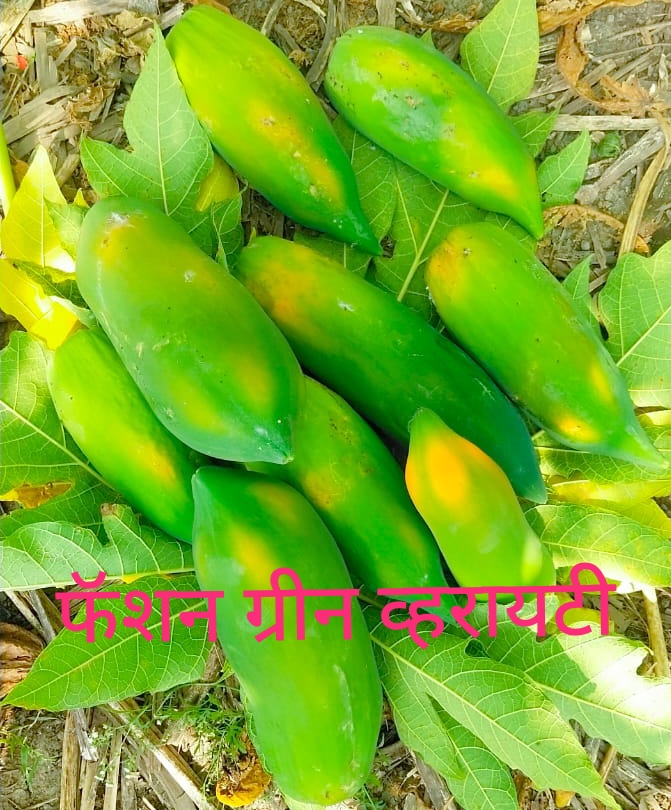
Minimum Order Quantity 1100 Plant
Plant Height 6-8 Inch
Packaging Type Tray
Delivery Time (Day) Within 10 To 15 Days
First Production 7 Months
Per Acre Plantation 1100 Plant
Crop Duration 15 Months
Production Per Acre 100 Thousand Kg
Per Plant Average Production 100-150 Kg/Plant
Fruit Buy Back Price 10 Rs/Kg
Mortality 10%
Delivery Charge Extra
Order Booking 45 Days Before Delivery
Fusion Green Papaya Soil and climate conditions:
Papaya is a semi-woody, usually single-stemmed plant, widely distributed in tropical and subtropical regions. The plant is singular in several aspects: short-lived perennial growth habit, large palmate leaves, rapid growth, hollow stems, petioles and fruits, and high phenotypic plasticity. Papaya plants may have three possible sexual forms: female, male, and hermaphroditic. Additionally, alterations in sexual forms and flower structure have been related to environmental constraints, which consequently modify fruit production and morphology, respectively. The climacteric fruits that are produced continuously during the adult plant life are widely commercialized and differ between female and hermaphroditic plants. The latex that the plants produce profusely contains enzymes with industrial uses and many other important compounds. These morphological and ecophysiological attributes rely on highly efficient mechanisms of resource capture, transport, and utilization. High photosynthetic rates, carbon gain, reproductive output, and growth and plasticity occur at the expense of high water and nutrient demand. Association with mycorrhiza is important for plant nutrition. Physiological acclimation capacity is evident at the shoot, root, and reproductive levels. These attributes have implications in the design of sustainable cropping systems in tropical and subtropical environments and make the papaya plant an ideal model for ecophysiological studies of growth, acclimation capacity, sex expression and longevity, and the integration with population biology and evolutionary change.